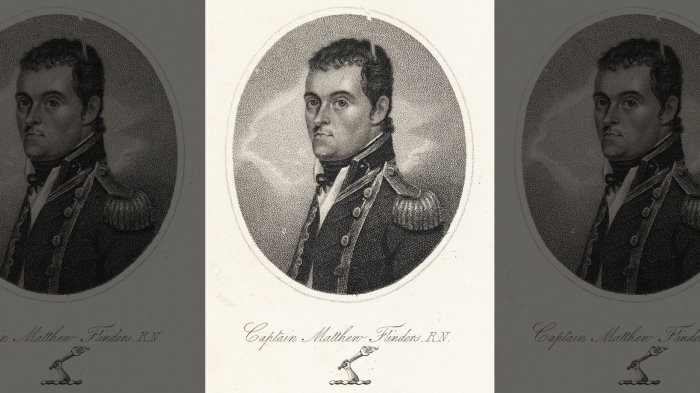Experts uncovered the grave of the celebrated Royal Navy captain as part of an archaeological dig prior to construction work for the HS2 high-speed railway project. Flinders’ remains were found in St. James’ burial ground near Euston Station in Central London.
In 1802 and 1803, as commander of HMS Investigator, Flinders became the first known person to circumnavigate Australia, confirming its status as a continent. In his book, “A Voyage to Terra Australis,” the explorer was also first to consistently use the name “Australia.” While others had used the term before him, Flinders’ work is credited with its gradual adoption. Previously, the continent had been known as “New Holland.”
Archaeologists identified Flinders’ remains by the lead plate placed on top of his coffin. He was buried at St. James's burial ground in 1814 but the headstone was removed in the 1840s, leaving the precise location of his grave a mystery.
“Following the expansion of Euston station westwards into part of the burial ground in 1840s, Flinders’s headstone was removed and it was thought that his remains had been lost,” explained the HS2 project, in its statement. “For a long time, there was an urban myth that Cpt. Flinders was buried under platform 15.”
A number of places in Australia have been named after the celebrated navigator and cartographer, including Flinders Station in Melbourne and the town of Flinders in Victoria. A statue honoring him was unveiled in London by Prince William on the bicentenary of his death in 2014.
“The discovery of Cpt. Matthew Flinders’s remains is an incredible opportunity for us to learn more about the life and remarkable achievements of this British navigator, hydrographer and scientist,” Helen Wass, head of heritage for HS2, in the statement. “He put Australia on the map due to his tenacity and expertise as a navigator and explorer.”
Experts, however, were surprised to find the grave, given that the burial ground contains 40,000 other human remains.
“We weren’t confident that we were going to find him,” Wass added. “We were very lucky that Cpt. Flinders had a breastplate made of lead meaning it would not have corroded.”
Flinders’ skeleton will now be studied, in part to gauge what impact life at sea had on him.
Officials believe other notables are in the burial ground, including Bill Richmond, a slave born in New York who as a free Londoner gained prominence as a boxer, and James Christie, a naval officer who in 1766 founded the auction house that bears his name.
Experts plan to remove tens of thousands of skeletons from the burial ground, where a rail station for a new high-speed rail line will be built.
HS2, which is building the rail line from London to Birmingham, said the remains of Flinders and roughly 40,000 others will be re-buried at a location to be announced.
More about: #History
















































